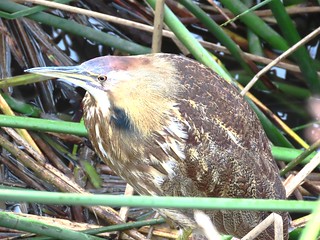Going short to go further


Copyright Maggie Smith, Flickr.
The idea of man as an evolutionary pressure – perhaps the evolutionary pressure – is not new, and some have taken to calling this a new geological age, the anthropocene, due to the wide scale changes we have ushered. Our disruptive reach is ubiquitous, highlighted by poster boys like global warming, overfishing, and habitat destruction.
Yet we forget that even the most commonplace of man’s creations can have a profound impact on the animals we share our space with. Take for example our cities and cars and the carnage they wreak on bird populations. Though firm numbers are hard to come by up to several hundred million birds could be victims of collisions with windows, and another eighty million are killed due to traffic. This is only in the United States alone. These are hidden casualties, ones we don’t see, but they’re real all the same, and such indiscriminate culling can have significant evolutionary consequences. Enter the cliff swallow.
Scientifically known as Petrochiledon, the family is divided up into about a dozen species of small migratory bird coloured in shades of whites, dark blues, and rusty oranges. Insectivorous, they often travel long distances, from as far as Argentina, to mate in North America. As their name suggests, they construct their nests on the sides of cliffs or the undersides of manmade structures like bridges and overpasses. Though quick, they can’t always escape the relentless movement of wheeled metal below their nests. All too often they end up as road kill.
Now it seems the cliff swallow is fighting back. A recent study by Charles Brown of the University of Tulsa in Oklahoma and coauthor Mary Bomberger Brown seems to indicate that these little birds are increasing their chances the only way they can: by evolving.
The pair have studied cliff swallows for some thirty years, both alive and dead, collecting and analyzing various metrics from some two thousand specimens. Over these three decades their data has shown that even as traffic has increased and vehicles have become bigger, cliff swallows have not only increased in number, but have become less likely to die from road attrition.
By comparing road fatalities with individuals dead by other means, the only noticeable physiological difference was one of wing span: those killed by something other than traffic had, on average, shorter wings.
How much shorter were these wingspans? One or two millimeters, on average, and while this may seem insignificant to us, it certainly isn’t insignificant to the cliff swallows, who gain greater maneuverability from their clipped wings.
The hope is that with these adaptations, cliff swallows can continue to change from unfortunate automobile victims to sedan-dodging acrobats. Conceivably, this also raises the possibility that other birds facing similar pressures could adapt.
The original paper can be found at http://www.cell.com/current-biology/fulltext/S0960-9822(13)00194-2
